In this article, we will learn to identify horsetail, she-oak, or Australian pine trees (scientific name: Casuarina) as well as how and when their pollen spreads.
| Casuarina (she-oak, horsetail, or Australian pine) | Pollen allergy profile |
|---|---|
| Pollen season | Autumn(Generally Oct-1st – Nov-30th) and Spring (March). |
| Pollination type | Wind pollination. When in bloom, each tree releases a large amount of pollen into the air |
| Cross-reactivity with other pollen | Possible reactivity with other trees in the same order Fagale e.g. oak, birch, alder, and walnuts. |
| Pollen source | Yellow-brown male thin brush-like flowers (catkins) that grow on the tip of the needle-like green stems (see pictures below) |
| Gender | Dioecious and Monoecious: Some species like C. Cunninghamiana have male and female flowers on separate trees (Dioecious). On the other hand, C. equisetifolia has separate male and female flowers on the same tree (Monoecious). |
| Leaves | Teeth-like, inconspicuous, and barely visible to the naked eye (See pictures below) |
| Fruit | Small seed cones, 0.75 to 1.5 inches in size (see pictures below) |
How to identify Casuarina trees (horsetail, she-oak, or Australian pine)?
Casuarina trees are introduced in the US from their native land Australia, where its pollen is an important allergen. Some of its species, like Casuarina cunninghamiana have separate male and female trees. A male tree, which is responsible for producing pollen is shown in the picture above.
The horsetail, she-oak, or Australian pine (genus: Casuarina), can be best identified by its needle-like green stems that hang loosely, which when bunched together indeed look like a horse’s tail. The male flower is a brown catkin at the tip of the needle stem and the female flower looks like a tiny half-inch cone.
Casuarina trees are evergreens and female trees generally always have fruit on their branches.
Flowers and fruit
Casuarina has both monoecious and dioecious species. Meaning some of its species like horsetail (Casuarina equisetifolia) have male and female flowers on the same tree (monoecious), and other species like river she-oak (Casuarina cunninghamiana) have male and female flowers on separate trees (dioecious).
Since only male flowers release pollen, the trees with only female flowers pose no risk to an allergy sufferer.
The male flower is a thin yellow-brown catkin that grows on the tip of the needle-like stem.
The female flower is small, wiry, and red, which upon successful fertilization produces a stout tiny half-inch round seed-bearing cone.
Leaves
What looks very similar to pine needles are actually stems of Casuarina. The leaves are inconspicuous, but visible upon close inspection, and grow at the nodes of these stems. They are 1/16th to 1/8th of an inch, teeth-like, and grow in whorls of 5 to 20.[2]
For an allergy sufferer, looking at the spikey green needles and male and female flowers is sufficient for identification. But for curious minds, here’s a picture of leaves from a zoom microscope at 30x magnification.
Tree shape and size
Casuarina trees grow a lush canopy, which sometimes barely stays above the ground if not trimmed routinely. In the photos, male and female Casuarina cunninghamiana side by side.
The trees can grow up to 60 feet tall although 20 to 40 feet are more common.
Bark and trunk
Casuarinas can have a single trunk or multiple trunks right off the ground. The bark is generally grey in color and has ridges or scales. The trunk can be one to four feet wide.
During which months do Casuarina trees release pollen?
Casuarina trees have two pollen seasons. Some species release pollen in autumn and some release pollen during spring. Our air surveys in Burlingame, CA catch Casuarina pollen from Oct-1st through Nov-30th during fall. And during spring, we get Casuarina pollen during March.
Casuarina cunninghamiana (She-oak) and Casuarina equisetifolia (Horsetail) both release pollen during autumn in the San Francisco Bay Area. I have observed enough pollinating trees in Sunnyvale, Burlingame, and San Mateo to conclude that during autumn the entire San Francisco Bay Area gets their pollen during fall.
Most trees release pollen for four to six weeks during autumn. However, some species of Casuarina release pollen in spring during the month of March as well.
The pollen season can shift each year by a few weeks depending on the weather conditions. This is why, if you suffer from Casurania tree allergies, it is important to learn about the tree and its pollen.
However, if you live in the San Francisco Bay Area, you have an easier way out! I do regular tree inspections and air sampling in the area to provide reliable pollen updates on our website
How does Casuarina pollen spread?
Casuarina trees release their pollen into the air and wind can carry its pollen many miles.
There are no Casuarina trees in my immediate neighborhood but there are a couple of male flower-bearing Casuarina about three miles away from my lab, and yet, my air sampler still catches some pollen during the month of October and November.
The birch (Betula) trees have similar-looking triporate (three pores) pollen, but it blooms in spring.
What does Casuarina pollen look like?
Each Casuarina pollen grain is about 30 to 35 microns in size. It has three protruding pores, but four are possible. The pores are surrounded by thickened skin. Casuarina pollen: Triporate, aspidate, annulate.
To see the pollen of other plants and trees, visit our pollen library.
How do you know if a Casuarina tree is releasing pollen?
The pollen is released by trees that have yellow-brown mature male flowers.
If the tree only has seed-bearing cones on it, it can not release pollen because it is a female tree (see photo below).
When the tree has immature yellow-brown male flowers on the tips of the green stems, the tree is not yet releasing pollen but it will in a few weeks( see photo below).
If the tree has brush-like yellow-brown slender male catkins growing at the tips of the needle-like stems, then the tree is releasing pollen (see photo below).
A male or hermaphrodite tree can release pollen for 4 to 6 weeks.
You can learn a lot more about pollen allergies and how to avoid them in my pollen allergy guide.
Casuarina allergy summary
Horsetail, She-oak, or Australian Pine(Genus: Casuarina) pollen is an important allergen in Australia. In the US, it is found in Florida and California. Since it is not routinely tested by clinicians in the US, its allergenicity in the US is not understood.
However, if you feel sniffly in the autumn during the month of October or November, Casuarina could be the culprit since it is the only allergenic tree in bloom. The other trees like Spruce and Deodar cedar could potentially be in bloom during autumn as well, but they are not considered important allergens in the US.
Casuarina belongs to the order Fagale. I have also written about the other allergens from this family, namely oak (Quercus), birch (Betula), alder (Alnus), and Walnut (Juglans).
Sources
- https://plants.usda.gov/
- http://dendro.cnre.vt.edu/dendrology/factsheets.cfm
- https://edis.ifas.ufl.edu/publication/HS394
References
- Allergy Plants by Mary Jelks, M.D.
- Plant identification terminology by James G. Harris and Melinda Woolf Harris (Second Edition)
- Sampling and identifying pollens and Molds by E. Grant Smith
All pictures, unless otherwise credited to another source, are taken by the author and are copyrighted material. The pollen picture is taken in our aerobiology lab using an Olympus compound microscope.

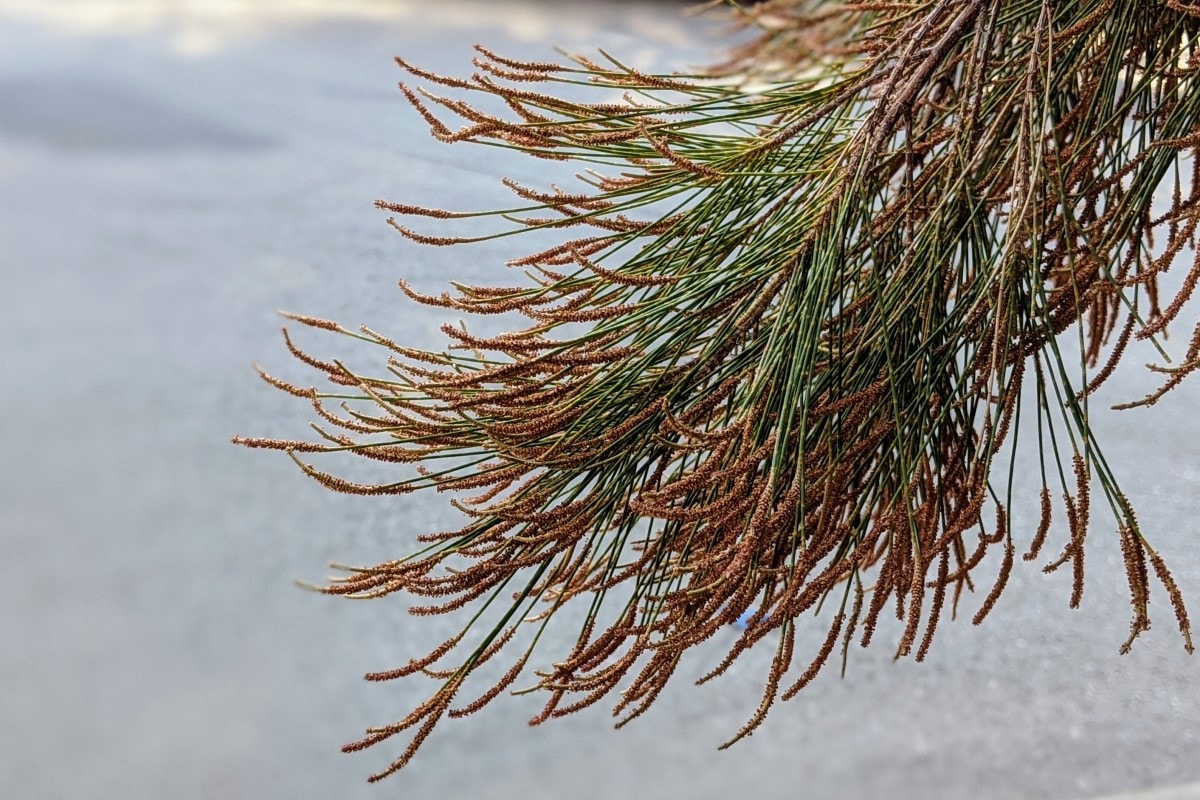
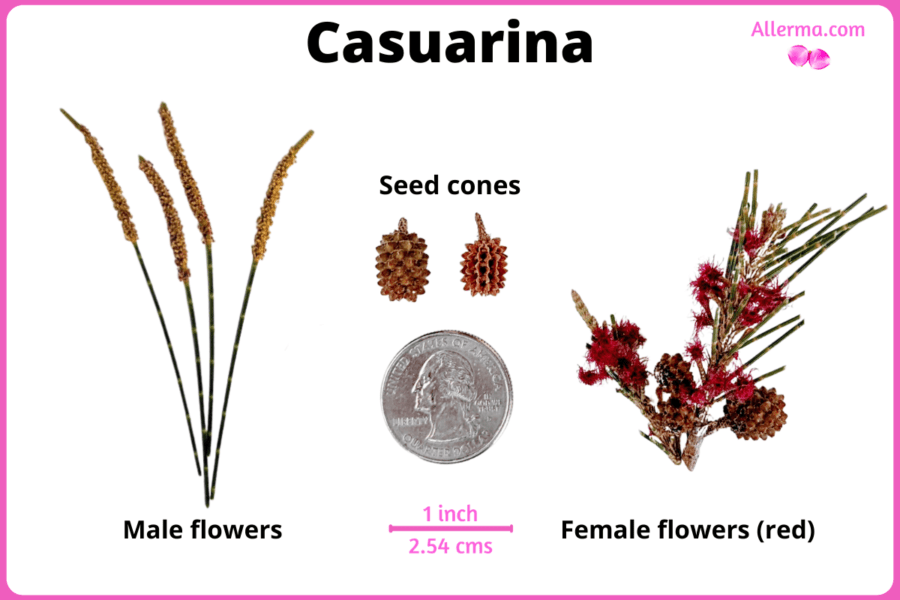
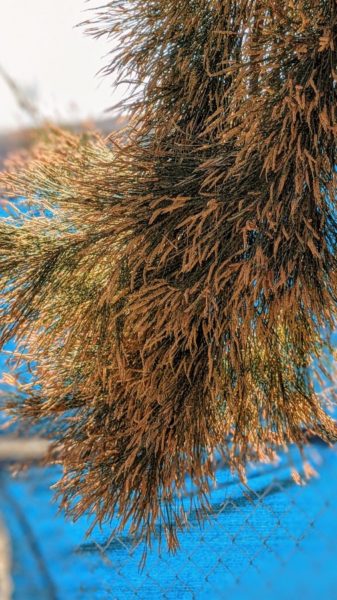
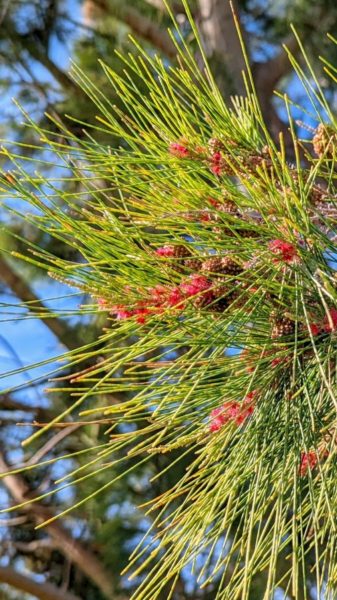
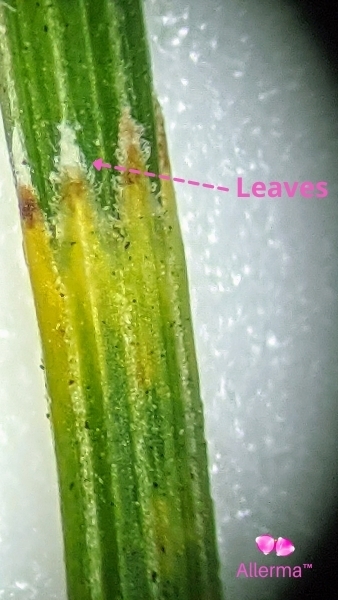
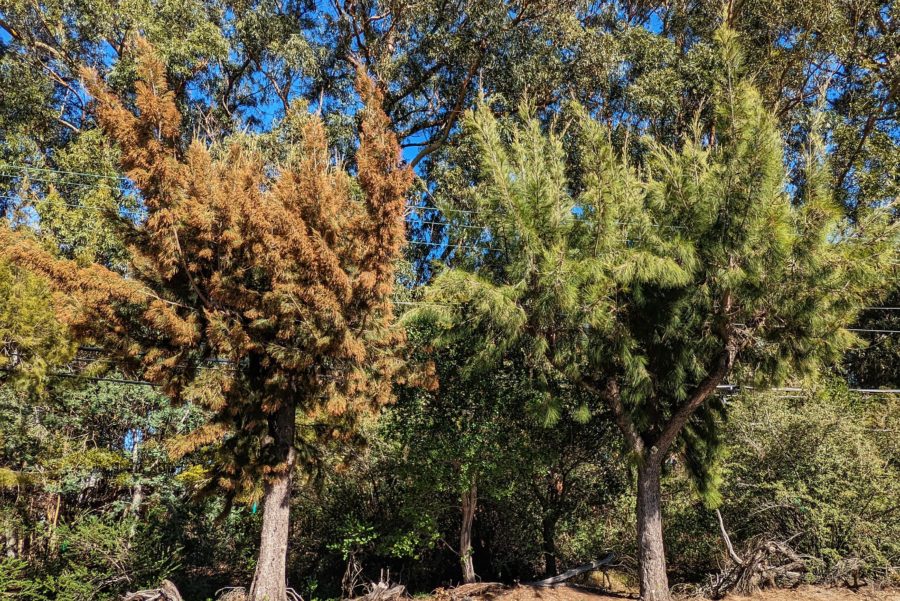
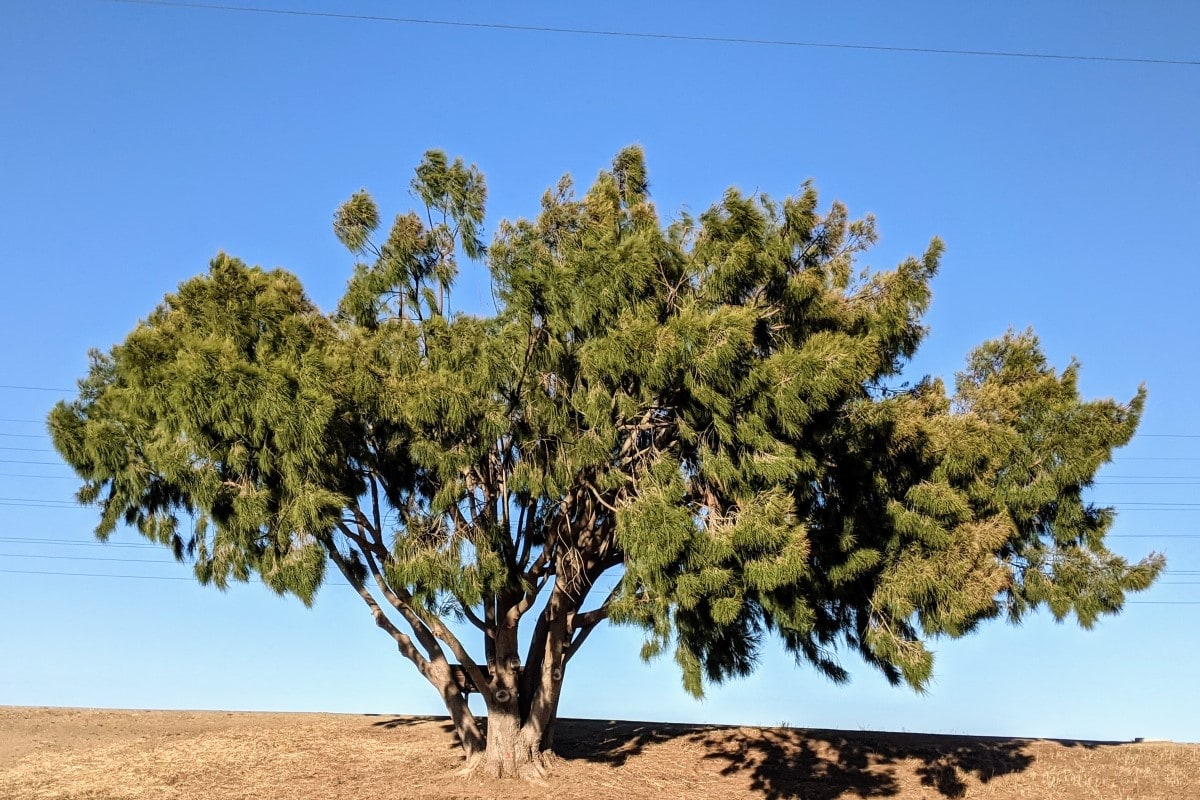

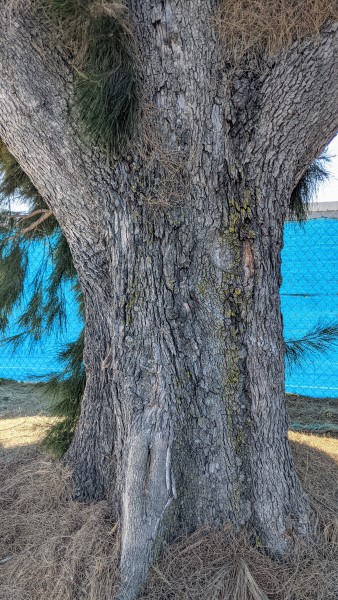




Thank you so much for this thorough guide and explanation. I was always wondering what trees flower in autumn in the Bay Area since my allergy acts up in September (as it is the case right now) and I knew that some MUST be flowering but could not figure out which ones. I looked up for information on multiple sites and although many offer “count” , none were so specific about possible culprits like your is (with Latin names and photos , etc.). Your page is very informative and helpful and now I know exactly what is probably causing my symptoms beside possibly a Ragweed. I know that skin test is the most accurate but one needs to go through so many hurdles to get one *sigh.